Raine supreme: Saving endangered turtles
How restoring the world’s largest green turtle nesting area is key to saving the Great Barrier Reef.
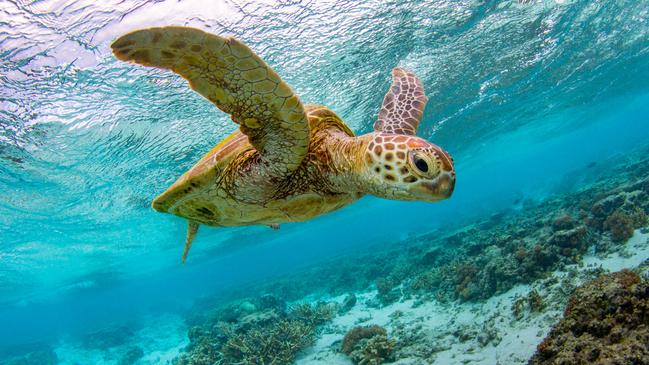
-
-
On the remote northern edge of the Great Barrier Reef lies a marine paradise that plays host to one of the most spectacular ocean migrations on the planet.
Raine Island is not only the world’s largest green turtle rookery, it’s also a crucial seabird rookery, and home to apex predators, pristine coral reefs and diverse populations of fish and other precious marine life. But it is also at significant risk.
This marine sanctuary, which featured in Sir David Attenborough’s 2015 documentary, Great Barrier Reef, is a remote 32ha coral cay 620km northwest of Cairns, where as many as 60,000 female green turtles migrate thousands of kilometres — some from as far away as Vanuatu — to lay their eggs.
Years of monitoring have shown that all this is under threat. Rising sea levels and climate change is having an impact on the green turtle population, whose reproductive strategies (laying eggs on low-lying beaches), leave them particularly vulnerable.
In the 1990s, scientists noticed that the hatching success rate was unusually low; thousands of adult females were dying each season, mainly from heat exhaustion, but also from falling off cliffs, and very few male hatchlings were produced as temperature can affect sex determination during incubation (the sand was too hot to produce males).
However, a world-first conservation program led by the Great Barrier Reef Foundation and its partners — the Raine Island Recovery Project — is not only saving our endangered turtles and restoring an incredibly important ecosystem, but it has also created a successful model and springboard for other reef-saving projects.
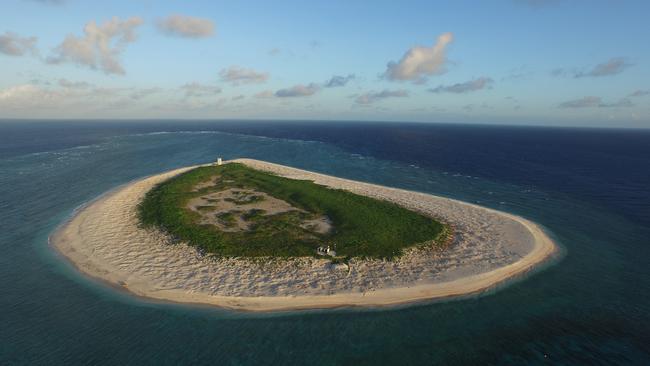
When it comes to climate change, the Great Barrier Reef, home to thousands of species of marine life including six of the world’s seven marine turtle species, is the canary in the coal mine. From coral bleaching to the decline of the green turtles, the health of the world’s largest reef is paramount.
The Great Barrier Reef Foundation and its partners are pioneering that project, bringing together the right people with the latest science and innovation. Working in partnership with rangers, reef managers and marine scientists including from the Queensland Government, the Marine Park Authority, and Traditional Owners — the Wuthathi Nation and the Meriam Nation peoples (Ugar, Mer and Erub) — things are looking up.
“Nowhere on the planet do more green turtles come to nest than Raine Island,” Great Barrier Reef Foundation managing director Anna Marsden says, “which is why it’s so important for us to do everything we can to ensure a future for these animals.”
Saving the reef and all its marine life is a huge task, but there is hope, and the success of this project shows that bringing together science, business, government and Traditional Owners can make an impact and save our reef.
“Saving endangered turtles contributes to a healthy reef that’s home to thousands of species of marine life, including six of the world’s seven marine turtle species,” Marsden continues.
“As well as being remarkable creatures, these gentle giants play a vital role in maintaining the health of our precious oceans and reefs. They help keep our coral and seagrass beds healthy and they deliver essential nutrients from the ocean to beaches and coastal dunes.
“Losing such a critical animal when we know there are things we can do is unthinkable.”
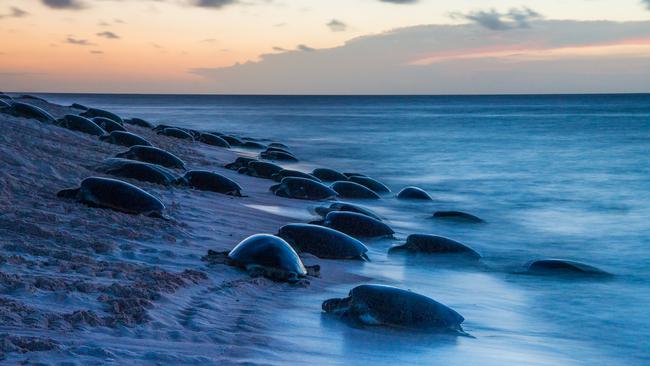
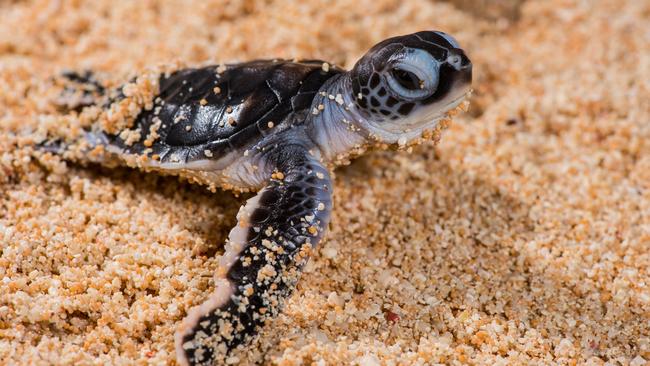
By pioneering various initiatives, including world-first sand reprofiling, fencing, research and monitoring, drone technology, and intervention, the Foundation is restoring the world’s largest green turtle nesting area.
One of the first things was to install 1750m of protective cliff-top fencing to reduce adult turtle deaths. This helped reduce cliff falls which now account for only 5 per cent of total deaths on the island. As well as saving these endangered turtles, the fencing also protects important seabirds and their nests.
The second initiative was to reprofile the sand to increase hatchling numbers and raise the beach to create higher and flatter areas so fewer nests are flooded during high tides. More than 40,000sq m (or roughly 16 Olympic-sized swimming pools) of sand was moved to raise the beaches above tidal inundation and double the nesting area to 70,000sqm.
Because of the project, there are 640,000 more baby turtles on the Reef, with more than 600 turtle mothers saved. Scientists estimate that the next 10 years will see an additional 4.6 million baby turtles.
“Due to reprofiling work, hundreds of thousands more green turtle hatchlings have emerged from the raised areas of the beach,” says Katherine Robertson, senior conservation officer with Queensland Parks and Wildlife Service. “Watching about 100 hatchlings run down to the water’s edge and start the next stage of their life is both thrilling and satisfying because I know that our project work has contributed to the next generation of green turtles.”
‘It’s a conservation world-first that has created a successful model and springboard for other reef-saving projects’
— Teresa Fyffe, Great Barrier Reef Foundation executive director Projects and Partnerships
The work has been accompanied by a sophisticated monitoring and research effort using 3D modelling, satellite technology and drones to count turtles more easily, safely and accurately. Historically, turtles were counted on the beach at night. But when there were thousands it became quite difficult. And as they don’t come up the beach every night, you never really got an accurate count.
The turtles are now studied through different survey methods such as on island and in-water counts, tagging and nesting success. About 64,000 turtles came to nest on the island December last year with an average nightly count of 11,969 turtles. The most counted in one night during the 2019/20 season was 13,683 and the oldest known nesting turtle was at least 70 years old — she was first tagged on Raine Island 38 years ago.
“As part of the project, we’ve satellite tagged 45 turtles on Raine Island since 2015, several of which travelled over 1000km back to their feeding grounds,” Robertson says.
“This provides vital intelligence about the movement and behaviour of the nesting turtles, such as where the turtles are nesting on the island. We now know that they are more likely to successfully lay their eggs in reprofiled areas.
“This is a big win for nesting females and it’s a big win for the project as we can see the positive results of the reprofiling work.”
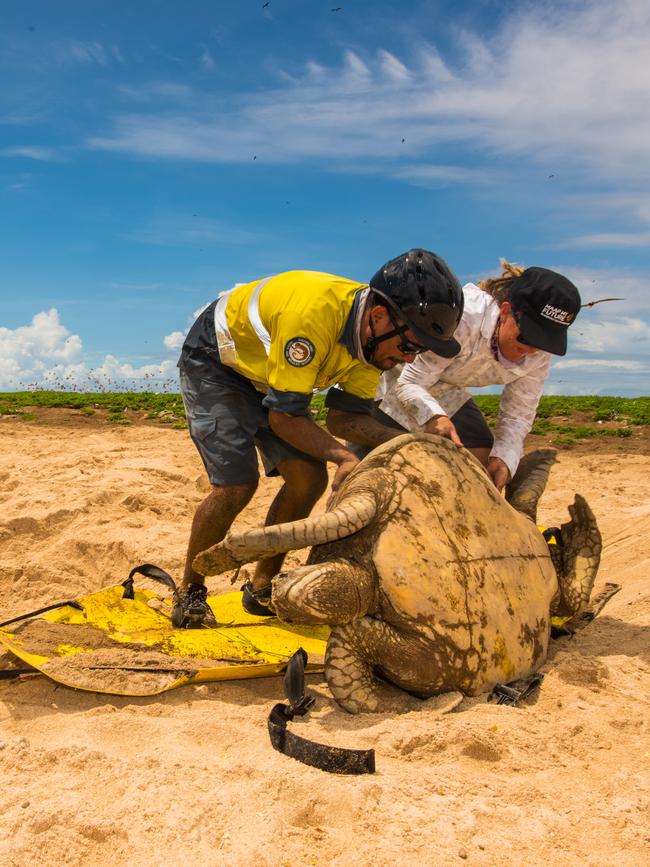
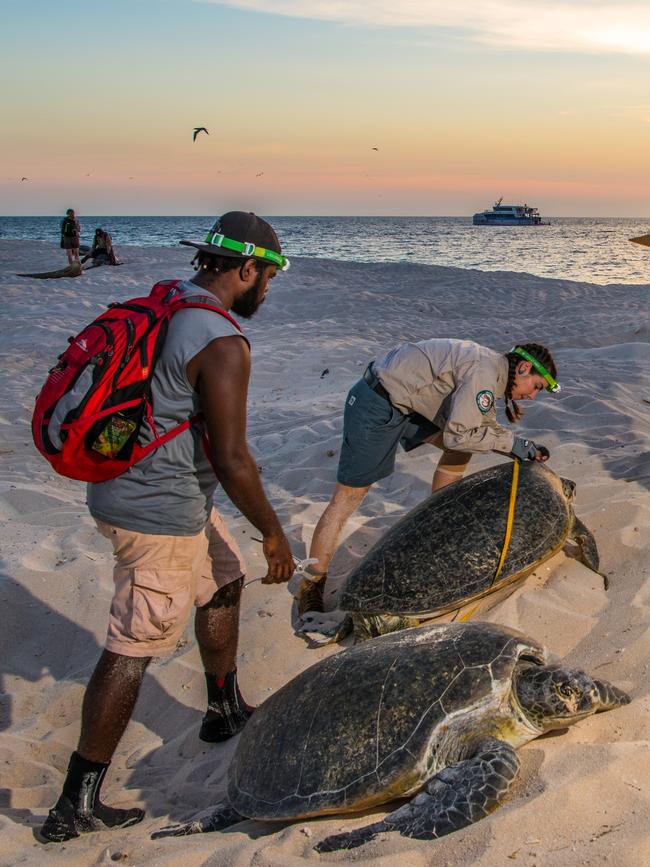
The Foundation’s executive director Projects and Partnerships, Theresa Fyffe, says “the (Raine Island Recovery) project has also achieved real breakthroughs for marine conservation that will have genuine global impact”.
“It’s a conservation world-first that has created a successful model and springboard for other reef-saving projects,” Fyffe says.
“We’re taking what we’ve learnt on Raine Island and establishing a network of climate change refuges by protecting other critical island habitats on four Great Barrier Reef islands.
“The Foundation is also behind a global initiative partnering with UNESCO and communities across five World Heritage reef sites in New Caledonia, Belize, Palau and Australia to respond to climate change and local threats.”
Through the project, the Foundation and its partners have made a considerable contribution to the northern Great Barrier Reef turtle population which benefits First Nations people in Cape York, Torres Strait and Pacific island communities further afield.
Traditional Owners charged with protecting the health of the reef, travel to the island regularly to support the teams carrying out sand testing, sand movement, turtle monitoring and satellite tracking. They also participate in and take ownership of the care of Raine Island and its animals, which provides enduring benefits for their communities.
Wuthathi Nation representative Peter Wallis says that being directly involved in the project “gives his people a better understanding of how to best look after the island through science”.
“As an Indigenous nation, our involvement is good for the scientists too, to learn from the Traditional Owners.” Jimmy Passi, from the Meriam Nation peoples, believes the work allows his people “to keep our history”.
“I really enjoy it and when I go home and tell my stories about the work and the island, it is making other people in my community, younger ones, want to get involved too.” Robertson says that by intervening on the ground, the project has been a catalyst for change.
“I hope we continue to make a difference to the reef,” she says.
“Because of the project and the support of the partners involved, each season we are going to see more and more hatchlings — and the nesting females we have rescued — coming back to nest again and again.
“Knowing that I helped to save a turtle from dying and then seeing it back up on the beach nesting means that I have contributed to the future of the green turtle population, which is just the most amazing feeling.”
Amazing indeed.
